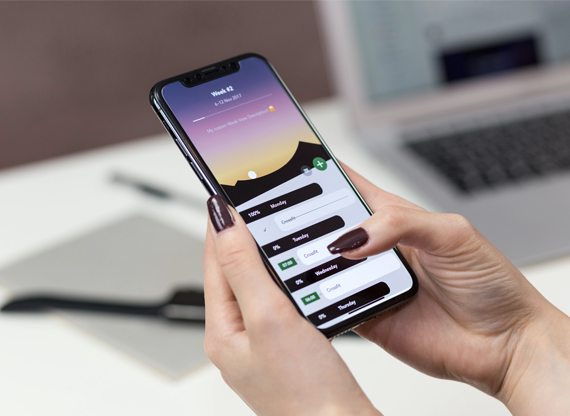
May 17, 2021
Digital Tools for Hypertension Can Equalize Health Beyond the Pandemic
Nearly half of adults in the United States live with hypertension, but only one in four of those have the condition under control. On the occasion of World Hypertension Day, we are exploring how digital tools can make a significant impact for people with or at risk of hypertension.
Digital Tools for Hypertension Can Equalize Health Beyond the Pandemic
May 17th is World Hypertension Day, an international awareness day founded by the World Hypertension League. The need for awareness and digital tools for hypertension is staggering as more than 50% of the hypertensive population worldwide are unaware that they live with this condition1.
As the COVID-19 pandemic spread worldwide and increased the risks for patients with pre-existing conditions, the importance of digital tools for hypertension stands out in the health tech community.
Living with Hypertension
An estimated 1.5 billion people worldwide live with hypertension or elevated blood pressure. Known as a “silent killer,” hypertension puts patients at greater risk of heart attack and stroke - all of which are leading causes of death for people living in the United States.
Nearly half (45%) of adults in the US live with hypertension2, but only one in four have the condition under control. Hypertension is the leading or contributing cause of death to nearly half a million American adults each year. It affects Black adults at higher rates than other groups, and minorities are less likely to use blood pressure controlling medications than the majority.
So, if hypertension is such a widespread condition that seems to thrive in the shadows of being undiagnosed and untreated, what more can be done to raise awareness?
Impact of COVID-19 on People with Hypertension
Unfortunately, the COVID-19 pandemic is a giant, persistent threat the healthcare community could not have imagined. As the pandemic took hold on the world, uncontrolled or untreated hypertension became one of the most precise predictors of severe illness from the coronavirus3. People with high blood pressure are at much higher risk of needing hospitalization, intensive care, a ventilator, or dying after contracting COVID-19.
For those unaware of their hypertension, decision-making during the pandemic could become a matter of life and death. Not adequately following masking, social distancing, or sanitization guidelines make the stakes higher for people with pre-existing conditions (no matter how unknown or undiagnosed). And with minorities already less likely to take blood pressure controlling medications and measures, the contributing factor of hypertension to the disproportionate amount of BIPOC coronavirus illnesses and deaths will likely be a frightful statistic to be borne out.
In addition to adversely affecting hypertension patients, COVID-19 has raised the barriers to access regular healthcare4 through fear, constricted resources, and technology disparity. Moreover, patients defer primary care checkups, routine tests, and even emergency room visits because of concerns about the pandemic. In the early days of the pandemic, clinics struggled to adapt to offering telehealth services, and in other cases, patients lacked the devices or adequate connectivity to access telehealth.
So, if it’s harder for patients to access healthcare resources during the pandemic, how can we increase the adoption of digital tools for hypertension?
The Need for More Digital Tools for Hypertension
Getting a diagnosis in the first place and learning about blood pressure monitoring are the first hurdles to clear - and they have to be available in any language and on any platform that can reach a patient. The World Hypertension League offers a simple PDF download providing information about blood pressure monitoring in 16 languages.
Yet, the essential thing for hypertension patients to do is regularly monitor blood pressure and symptoms. Offering this through digital tools encourages daily adherence through prompts and reminders and can provide valuable data for the patient and their healthcare provider. Digital tools for hypertension can not only help patients with high blood pressure on a day-to-day basis, but they can also help to manage routine care and open the door to integrated care, particularly for vulnerable and uninsured populations.
Overall, better, more comprehensive care means improved outcomes and disease management as well as reduced long-term cost to the medical system and its resources. With a chronic condition like hypertension, you don’t stop needing care - unfortunately, things just become more emergent.
At Bayer G4A we are working together with companies developing digital health innovations that enable access to treatment and care for everyone in order to live longer, healthier lives. This year we are looking for digital health companies to join us in tackling cardiometabolic and renal diseases such as hypertension. Find out more about this year’s challenges and how to apply for the G4A Partnerships Program here.

Dominick Kennerson
Global Head, G4A Digital Health
References:
- https://www.ncbi.nlm.nih.gov/pmc/articles/PMC2643187/
- https://www.cdc.gov/bloodpressure/facts.htm
- https://www.mayoclinic.org/diseases-conditions/coronavirus/expert-answers/coronavirus-high-blood-pressure/faq-20487663
- https://www.bloomberg.com/news/articles/2021-02-09/covid-pandemic-missed-doctors-appointments-create-new-crisis-experts-say






